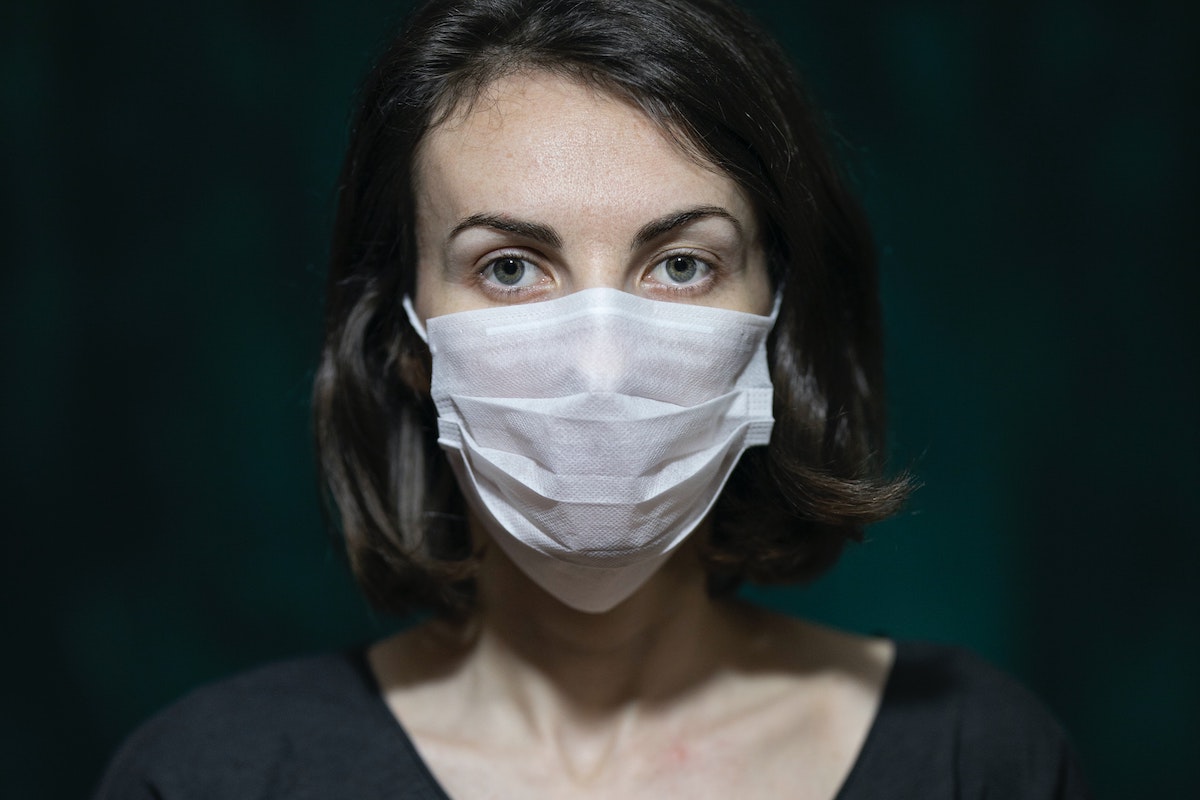COVID-19
Reassessing the Guidance on Face Masks
Overly broad masking requirements are at best useless, and possibly harmful, since they can cause confusion and prompt at least some to rebel against masking if the practice is too onerous or impractical.

The efficacy of face masks for limiting the spread of SARS-CoV-2 remains uncertain and hotly contested. Recommendations vary between countries as do the reasons given. In Norway, where I live, masks are not considered necessary because very few people are infected, and efforts to contain the spread of the virus have been quite successful without mandating their use by the general public. But the debate about whether or not masks “work” is complicated and requires attention to numerous variables and contingencies. Even if we can agree that masks do help limit the spread of the virus to some degree, the conditions under which they are most effective can differ enormously, and recommendations to wear masks “in public” can actually mislead more than they illuminate and even cause some harm.
We now know more than we did even a few weeks ago about how the virus spreads. In a blog post inspired by a Quillette essay analysing superspreader events, immunologist Erin Bromage delineates the salient principle as “Successful Infection = Exposure to Virus x Time.” Exposure time is important because infection requires a minimum number of virus particles (the exact threshold remains unknown, but Bromage estimates 1,000). So, repeated or continued exposure for many minutes or hours progressively increases the risk. Oddly, the discussions I read online, even in forums dedicated to SARS-CoV-2, often ignore exposure duration entirely, and some experts have neglected this important variable too.
Bromage points out that infection is rare outdoors, and that the risk is much higher if you are in the same room as an infected individual for a period of time, especially if that person is shouting or singing, never mind coughing or sneezing:
The reason to highlight these different outbreaks is to show you the commonality of outbreaks of COVID-19. All these infection events were indoors, with people closely-spaced, with lots of talking, singing, or yelling. The main sources for infection are home, workplace, public transport, social gatherings, and restaurants. This accounts for 90 percent of all transmission events. In contrast, outbreaks spread from shopping appear to be responsible for a small percentage of traced infections.
The environments Bromage lists highlight three problems with recommendations that enjoin mask use “in public.” First, much of the spread occurs in settings that are private, or that people would not normally think of as public, such as workplaces. Second, some public spaces such as restaurants are hardly optimal for mask wearing. Restaurant staff can wear masks, but it is impractical for patrons to wear them while eating, and innovations like the Israeli Pac-Man design are unlikely to catch on. Third, open air public settings are not especially risky.
Public transport is the public setting in which guidance recommending or mandating masks makes most sense. The risk is high due to exposure time, it’s feasible to wear one, and it is often difficult to avoid crowding that forces people into close proximity with one another. In the United States, there is a clear correlation between reliance on public transport and the COVID-19 fatality rate. New York City tops the list of cities with high transit ridership, and a recent analysis of COVID-19 trends in China, New York, and Italy suggests that masking requirements have contributed to reducing the spread. A recent Danish simulation study of superspreading found that “transmission can be controlled simply by limiting contacts such as public transportation and large events.” A New York City subway car can carry up to 250 passengers. Although the duration of a ride may be shorter than, say, a concert, the number of “events” is much higher because travellers sometimes make multiple journeys a day.
Shops are less hazardous because the risk of spending much time close to an infected person is low unless an unusually high proportion of people present are infected. (The risk is obviously higher for store personnel who spend all day there.) Workplaces may be public in a legal sense, but most employees probably don’t think of themselves as being “in public” at work, and workplaces are typically too varied for a blanket recommendation to be useful. On the other hand, masks worn at home can help limit spread, but only before symptoms appear. This is unlikely to be a general recommendation, but it is worth considering in high-risk cases (such as when an elderly relative lives in the family home). This further highlights the mismatch between guidance recommending the wearing of face masks “in public,” and a more accurate understanding of relative risks posed by various environments.

A recent article in Science supports the assessments of relative risk outlined above:
Thus, it is particularly important to wear masks in locations with conditions that can accumulate high concentrations of viruses, such as healthcare settings, airplanes, restaurants, and other crowded places with reduced ventilation.
The authors conclude by recommending:
For society to resume, measures designed to reduce aerosol transmission must be implemented, including universal masking and regular, widespread testing to identify and isolate infected asymptomatic individuals.
The World Health Organisation’s guidance from June 5th is similar in its particulars. Advice differs depending on whether or not there is “widespread transmission and limited or no capacity to implement other containment measures.” Even when there is no such capacity, the WHO recommends masking in “settings where a physical distancing cannot be achieved,” specifically public transport and high-risk occupational settings. Only where there is widespread transmission does it call for the wearing of masks in a much wider range of settings such as “grocery stores, at work, social gatherings, mass gatherings, closed settings, including schools, churches, and mosques.” All the news coverage I have seen on the WHO guidance appears to have missed this distinction.
So a scientific consensus appears to be emerging consistent with the available data. But it is conveyed to the public in confusing ways that unintentionally leave the impression that public settings are dangerous and private settings are safe. Studies that attempt to model the effects of masking without considering the differences in risk between settings therefore produce misleading findings. A much-publicised study from April 21st (two days before the article in Quillette appeared) claimed that “if 80 percent of Americans wore masks, COVID-19 infections would plummet.” Another recent study found that “When 100 percent of the public wear face masks, disease spread is greatly diminished.” This is an attractive idea. Wearing masks is not much of an inconvenience compared to some of the other restrictions imposed upon societies to limit spread. Wouldn’t it be wonderful if we could all just wear masks and otherwise just get on with our lives as normal without worrying too much?
These papers are modelling studies, not empirical ones using actual people, and as far as I can tell, they pay no attention to length of exposure or the difference in risk between settings. In other words, these studies do not seem to adequately reflect the real-world situations where the virus spreads. The earlier of the two papers advocates universal masking, and the recommendations it proposes echo the idea that masks should be worn “in public.” It does recommend that masking be made mandatory or strongly recommended for the general public when using public transport or in public spaces, for the duration of the pandemic.
The researchers claim to have modelled the effect of mask wearing by a given percentage of the population. But they do not seem to have considered that 80 or 100 percent would not use masks in possibly infectious settings such as restaurants or private gatherings. This might be the equivalent of halving the amount of mask wearing, and we could easily end up in a situation where their own models predict that the effect of masking basically evaporates:
“This is the goal,” De Kai maintained. “For 80 or 90 percent of the population to be wearing masks.” Anything less, he added, doesn’t work as well. “If you get down to 30 or 40 percent, you get almost no [beneficial] effect at all.”
Overly broad masking requirements are at best useless, and possibly harmful, since they can cause confusion and prompt at least some to rebel against masking if the practice is too onerous or impractical. People will think for themselves, so if recommendations are to be effective, they need to make sense. The public needs to understand why wearing a mask in certain settings is important and less so in others so they can make informed judgments about risk and safety on their own, instead of being asked to robotically follow a generalised guideline about behaviour “in public.” Clear, comprehensible, and reasonable policies will hopefully provide less room for confusion and for polarised discussions. This is particularly critical at a time when societies are trying to reopen their economies and return their populations to free and normal lives as safely as possible.






